Day 1 of a 3 day long weekend of Late Autumn Tours in North Norfolk today. It was a glorious sunny day today, with blue sky and with winds falling light. A great day to be out.
As we made our way west along the coast road, we stopped briefly just outside Burnham Overy Staithe to admire a large flock of Pink-footed Geese in a stubble field by the road. We could see their dark heads and small, mostly dark bills.
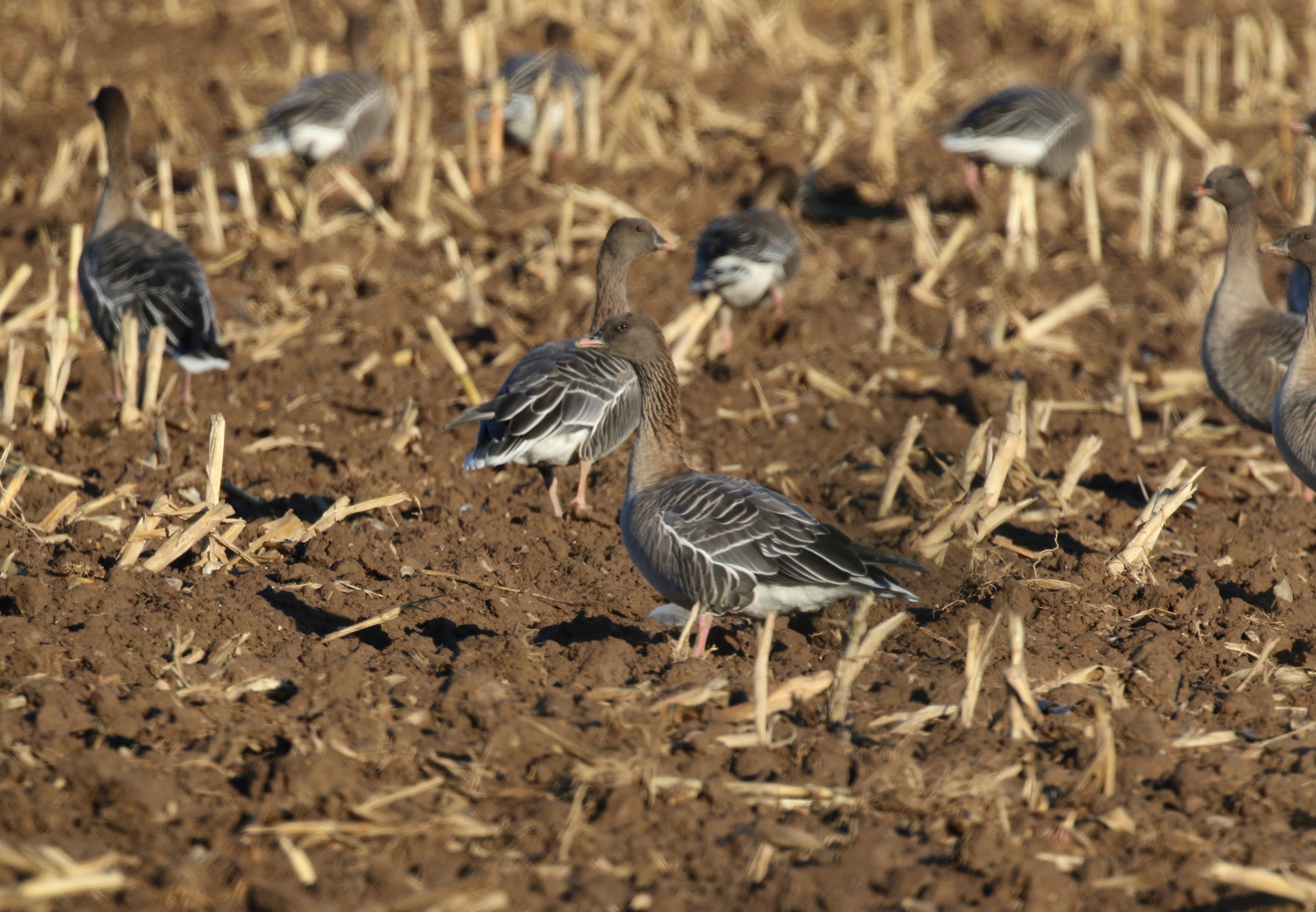
Our first destination for the morning was Holme. As we got out of the car, a large flock of Starlings flew low over us, heading west. It was to be a feature of the morning, with a constant stream of Starlings moving, many passing low over the beach. These are birds arriving from the continent for the winter, coasting here before turning inland.
There were small numbers of Chaffinches moving too first thing, and three Jackdaws west over the beach looked like they might be migrants too. A Skylark was singing, but others looked like they might be fresh arrivals, also on the move. As we walked across the golf course, a Sparrowhawk flew low over the fairway and into the dunes, presumably hoping to find some tired migrants in the bushes.
When we got over to the saltmarsh, we could see several people with binoculars and telescopes walking through the vegetation. They flushed several small groups of birds as they went – mainly Skylarks and Linnets. But as one flock came up, we heard a Shorelark call and it seemed to drop over the dunes towards beach with all the other birds.
We walked over the dunes but all we could see were a couple of Skylarks down on the high tideline. We couldn’t see where everything else had gone.
We stopped to scan the beach, looking through the waders dotted about on the sand. There were lots of Oystercatchers and Redshank, several Turnstones, silvery white Sanderling running up and down in front of the waves and a single Knot. All along the shoreline, Cormorants were standing, drying their wings in the morning sunshine.
There were lots of dog walkers out now, particularly on the beach towards Old Hunstanton. As the dogs raced around on the sand, they flushed all the birds down that end, which flew up past us. As well as lots of Oystercatchers and Brent Geese shining in the morning light as they passed by, we could see a couple of Bar-tailed Godwits with them too.
There didn’t seem to be much on the sea, looking out from here. A lone Red-breasted Merganser flew past. As we stood and watched, we started to notice flocks of Teal coming in low over the waves, 20-50 at a time. They poured past all the time we were watching, hundreds by the time we left, all birds arriving here from the continent for the winter. Several skeins of Pink-footed Geese came in off the sea too – we watched one flock all the way in from out towards the wind farms. Real migration in action
Then we noticed a large, dark bird coming along the beach straight towards us. It was a juvenile Pomarine Skua, presumably blown inshore by last week’s storms and now scavenging along the shoreline here.
There was no sign of any Shorelarks out on the beach here, so we started to walk back the other way. As we did so, a Shorelark flew over calling and we watched it drop down over the far side of saltmarsh, on the edge of the dunes. Unfortunately, by the time we got round there, we found two people walking along the tideline, and there was no sign of it. We turned back to continue east and we hadn’t gone more than a few metres when the Shorelark flew past again.
This time it dropped down on an open area of saltmarsh, and we could see where it landed. We walked over and had a good look at the Shorelark through the scope out in the open, before it ran across and disappeared into the vegetation. We made our way round to the other side, to see if we could find it again, and it ran out of the saltmarsh right in front of us. It was just a few metres away and we had a great view of it through our binoculars. We could see its bright yellow face catching the sun as it turned, with a black bandit mask.
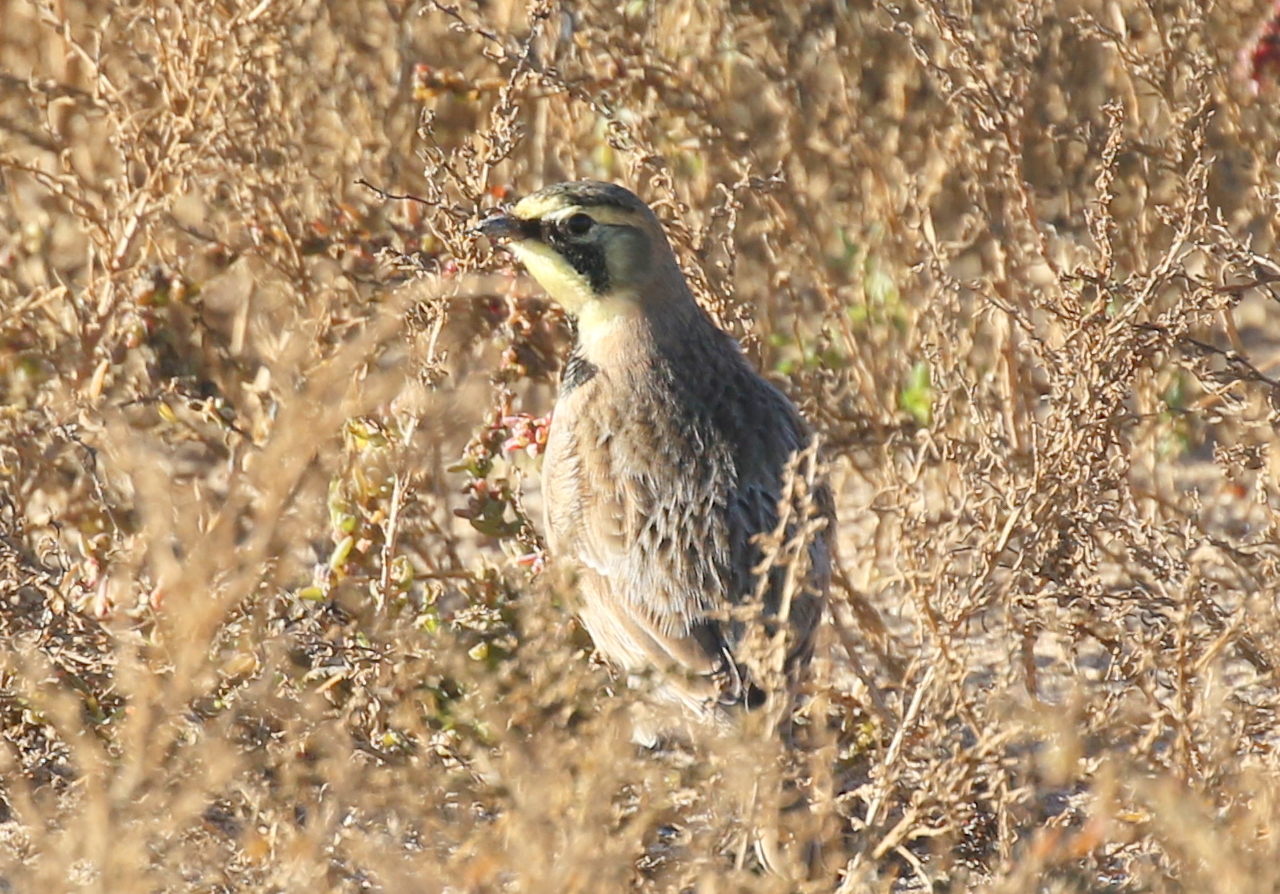
Eventually the Shorelark ran back into the vegetation. There has been a flock of over ten here in recent days, so this one was probably looking for the rest of them. We decided to walk up a little further along the beach, to see if we could find the flock and to have a look at the sea up towards Gore Point.
We didn’t quite get that far, but we stopped to scan the sea from the beach. There were lots of Great Crested Grebes offshore, their white winter faces and necks shining in the morning light as they crested the waves. There were three grebes together not far offshore, diving and drifting with the tide. One looked much smaller than the others and through the scope we could see it was a Slavonian Grebe with two Great Crested Grebes.
Otherwise, all we could see off here today was a young Gannet diving offshore, way off in the distance. We decided not to continue along the beach, so we turned and headed back to the car. As we got there, we heard Fieldfares chacking, and looked up to see a large flock flying over. They were quite spread out, but they continued to pass overhead for several seconds. A couple of Redwings flew over with them, teezing.
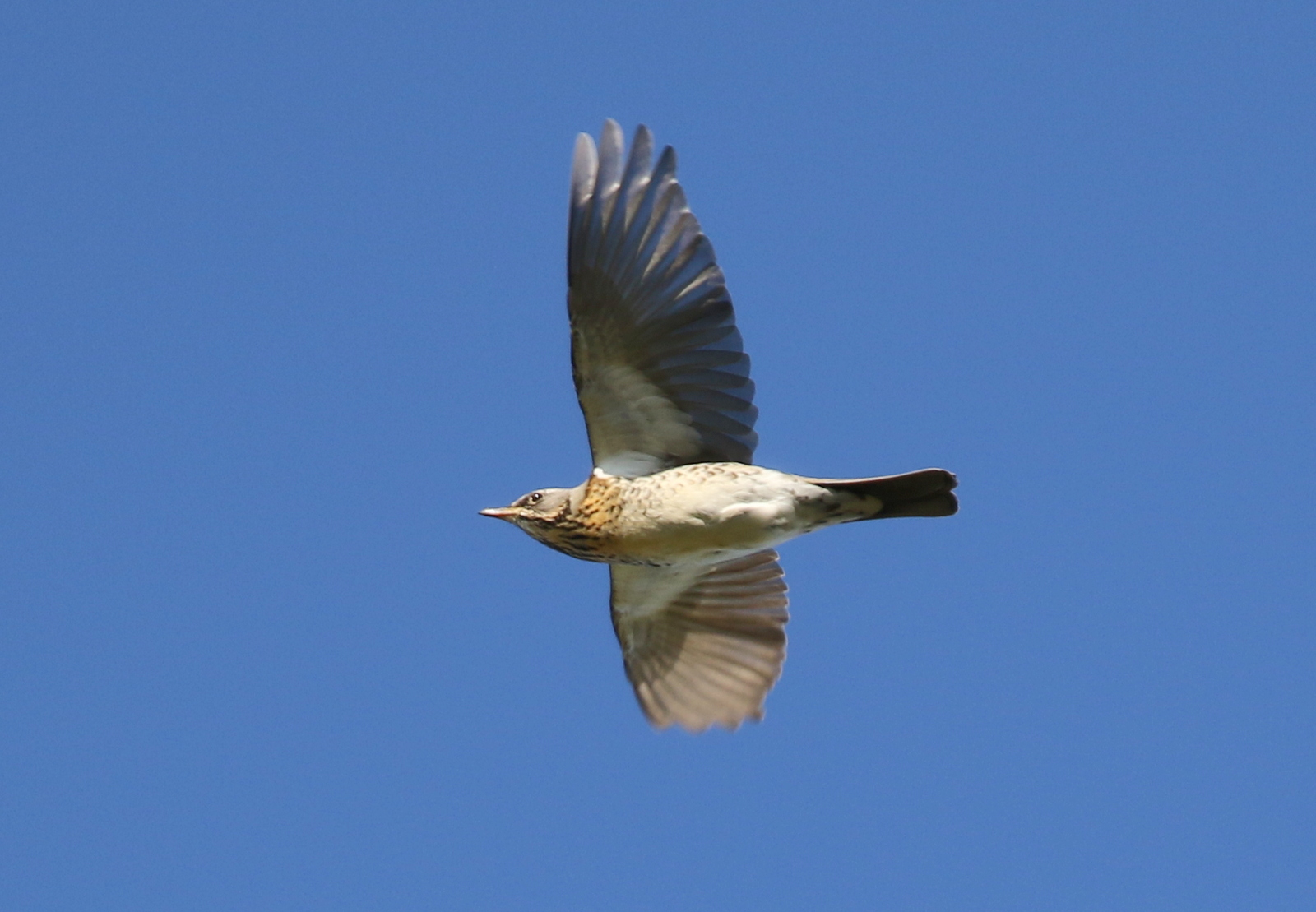
Our next stop was at Thornham Harbour. All we could find in the channel by the road was a single Common Redshank, perhaps because there were several people walking around here now, out enjoying the lovely morning. There were a couple more Redshank by the sluice and further out along the edge of the harbour, two Greenshank were roosting on the muddy bank. They really stood out, their much whiter underparts glowing in the sunshine.
Up on the seawall, we made our way along to the corner where we stood for a while and scanned. A large flock of Curlew flew past with a single Bar-tailed Godwit in with them. They circled round and landed down on the saltmarsh out in the middle, joining an even larger group which was already roosting there, well camouflaged in the vegetation. There were two Grey Plover feeding down on the muddy island in the harbour channel and they were joined by a couple more Bar-tailed Godwits which gave us a chance to get a good look at them in the scope. Further out, a couple of Ringed Plover were roosting on the edge of the channel.
Looking out to the middle of the harbour, we could see lots of gulls roosting, mainly Herring Gulls and Great Black-backed Gulls. Around the edges of the channels, we could see lots of Brent Geese, lots of Wigeon and a few Shelducks. A Little Egret flew in, flashing its yellow feet, and landed in the mud just below the bank.

Several Linnets flew back and forth across the saltmarsh, in small groups. But when another four small finches flew past, their distinctive call immediately attracted our attention. They were Twite, once a common wintering bird along the coast here, but now mainly restricted to a handful of sites of which this is the best.
The Twite flew past us and out over the saltmarsh, getting almost to Holme before they circled back round and flew in past us again. They had picked up a few friends, as there were eight of them now. They wouldn’t settle though, and they circled round and back out towards Holme again. When they came round past us for a third time, this time they headed for their favourite tree in the field nearby and landed. They were silhouetted against the sun though, so it wasn’t a great view.
The Twite showed no sign of moving, so we turned our attention back to the harbour. Eventually, they took off again and we heard them calling as they flew in behind us. This time, two of them dropped down to the puddles on the seawall to drink. We had a quick look at them through the scope – their yellow bills catching the sun – before they flew off again and disappeared out over the saltmarsh.
As we made our way back, a small flock of Linnets flew in and landed on some seedheads on the edge of the saltmarsh below the path. Through the scope, we could see they were duller and darker, with grey bills. Tide coming in fast now.
Our final destination for the day was Titchwell. It was time for lunch when we arrived, and we ate watching the finches and tits on the feeders by the Visitor Centre. After lunch, we made a quick trip back to the car park to get the scope, where a Chiffchaff was calling in the sallows by the path.
Walking out along the main path, we couldn’t see anything of note on the former pool on the Thornham grazing marsh, which is now getting very overgrown. A Cetti’s Warbler was calling in the reeds, but there was nothing at all on the reedbed pool. A couple of Coot were feeding in one of the reedbed channels.

The Freshmarsh looked rather quiet today, when we arrived. The reeds in front of Parrinder Hide looked freshly cut, so we suspected the wardens had been clearing vegetation on here and had probably scared a lot of birds off. There were still a few waders on here, most notably seven lingering Avocets and a small flock of Bar-tailed Godwits which had presumably flown in to roost from the beach on the rising tide. A single Dunlin was feeding in front of Parrinder Hide.
While we were watching, a few Ruff flew in and landed down onto the mud, winter adults with pale scalloped upperparts. Several groups of Golden Plovers dropped in too, but they were rather nervous and wouldn’t settle, flying up again and whirling round in the sunshine, flashing alternately golden brown and white. Great to watch!

Small groups of Brent Geese commuted in and out from the saltmarsh too. There are plenty of ducks here now, as birds have returned for the winter – Teal, Shoveler and Wigeon. The drakes are now moulting out of eclipse plumage and back into their breeding finery, slowly getting back to their best. A single Greylag and one of the two injured Pink-footed Geese, which have spent the whole year here, were feeding on one of the closer islands. There were two Egyptian Geese here too.
We had already seen one Red Kite, very distantly hanging in the air over the fields inland. Then when everything flushed from the Freshmarsh, we looked up to see a Red Kite drifting over. It made a beeline directly out towards the beach, and was swiftly followed by a second Red Kite which followed it.
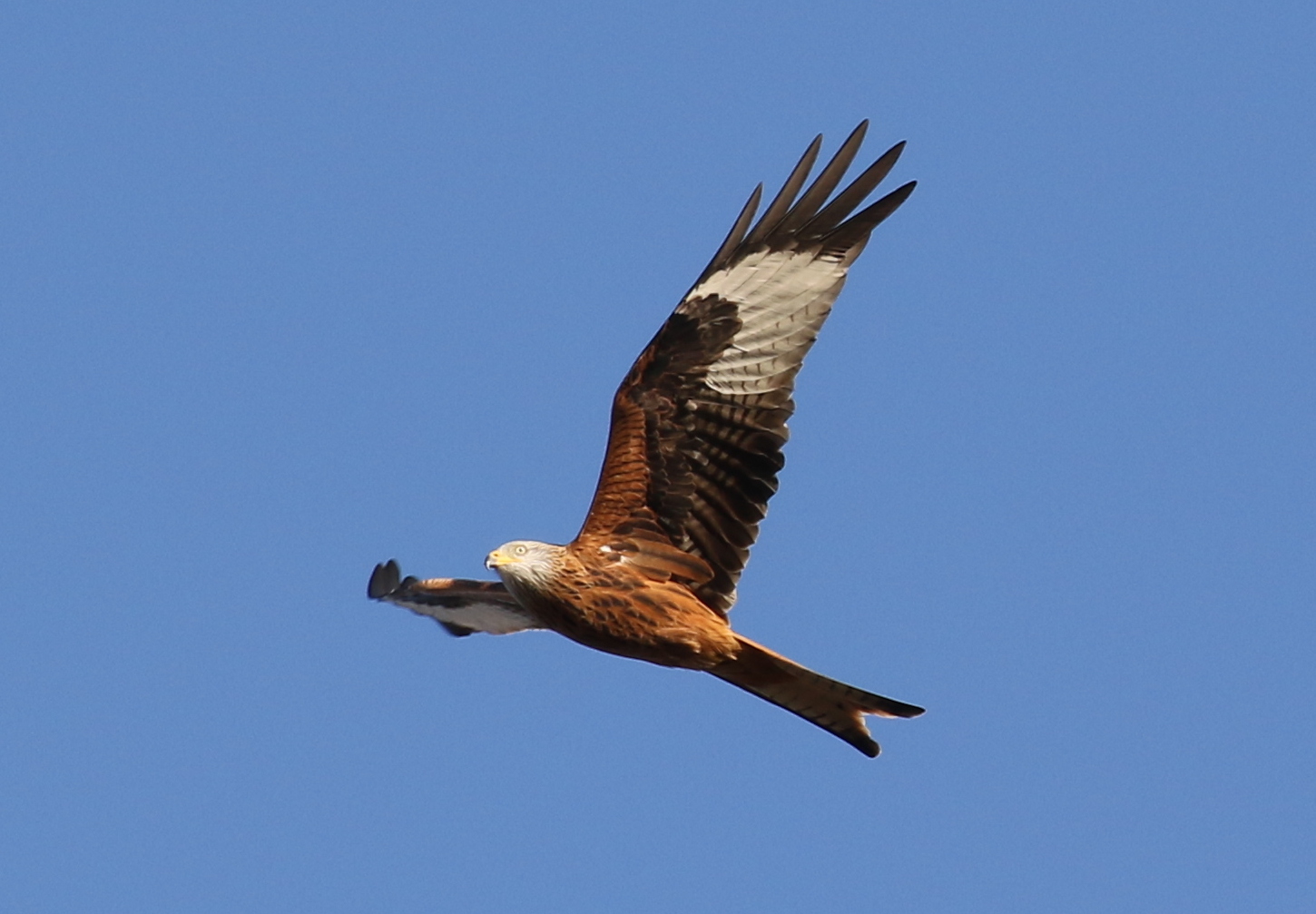
It was nice in the sunshine up on the West Bank path today, so we didn’t feel any rush to go into the hides. With the weather so calm and the light so good, we decided to head straight up to the beach. The tide was in when we got to the Volunteer Marsh, but a nice close Common Redshank was feeding along the muddy edge just below us.
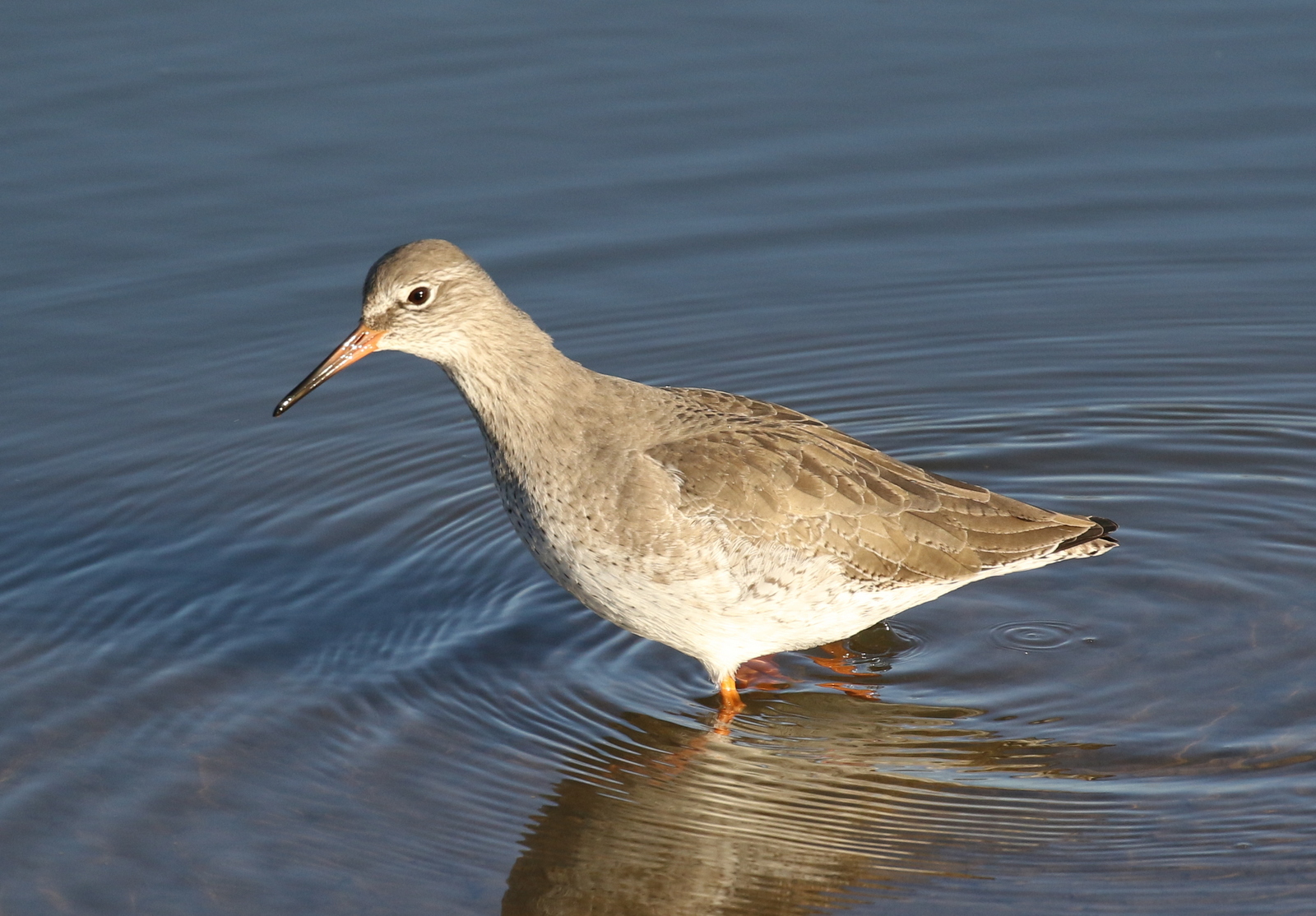
All the waders were roosting on the one remaining island on the no-longer ‘tidal’ pools today, which was why they were not on the Freshmarsh. There were lots of Oystercatchers, Grey Plover and Dunlin. Several much paler birds really stood out and through the scope, we could see they were four Spotted Redshanks and three Greenshank. We had a good look at the Spotted Redshanks, noting their longer, needle-fine bills and white stripe over the lores.
Carrying on to the beach, the sea was in and covering all the mussel beds. The Turnstones had taken to roosting on the concrete blocks of the old bunker and looking more closely we could see there was a single Purple Sandpiper hiding in with them. We walked down the beach and got it in the scope for a closer look.

The Purple Sandpiper dropped down to feed on the beach with the Turnstones, picking around in the pile of razorshells left behind by last week’s storms. There were several Sanderling running around on the sand too, in and out of the waves like clockwork toys, and a larger group trying to roost on the beach further down. A couple of Bar-tailed Godwits were feeding along the edge of the water.
Looking out to sea, we could still see lots of Great Crested Grebes, but with the sea much calmer than this morning they were all now very distant. Three Razorbills in a small group were diving offshore, not easy to see despite the gentle swell, and three Common Eider flew east offshore. There were still more small skeins of Pink-footed Geese coming in off the sea – we could hear their high-pitched yelping calls as they flew in over the beach.
As we walked back along the main path, we stopped to admire one of the Spotted Redshanks which had now moved to the Volunteer Marsh. It was feeding with a Common Redshank in the channel just below the bank, very close to the path, giving us a great, close-up, side-by-side comparison. We could even see the small downward kink in the tip of the Spotted Redshank‘s bill through our binoculars – it was too close for a scope!
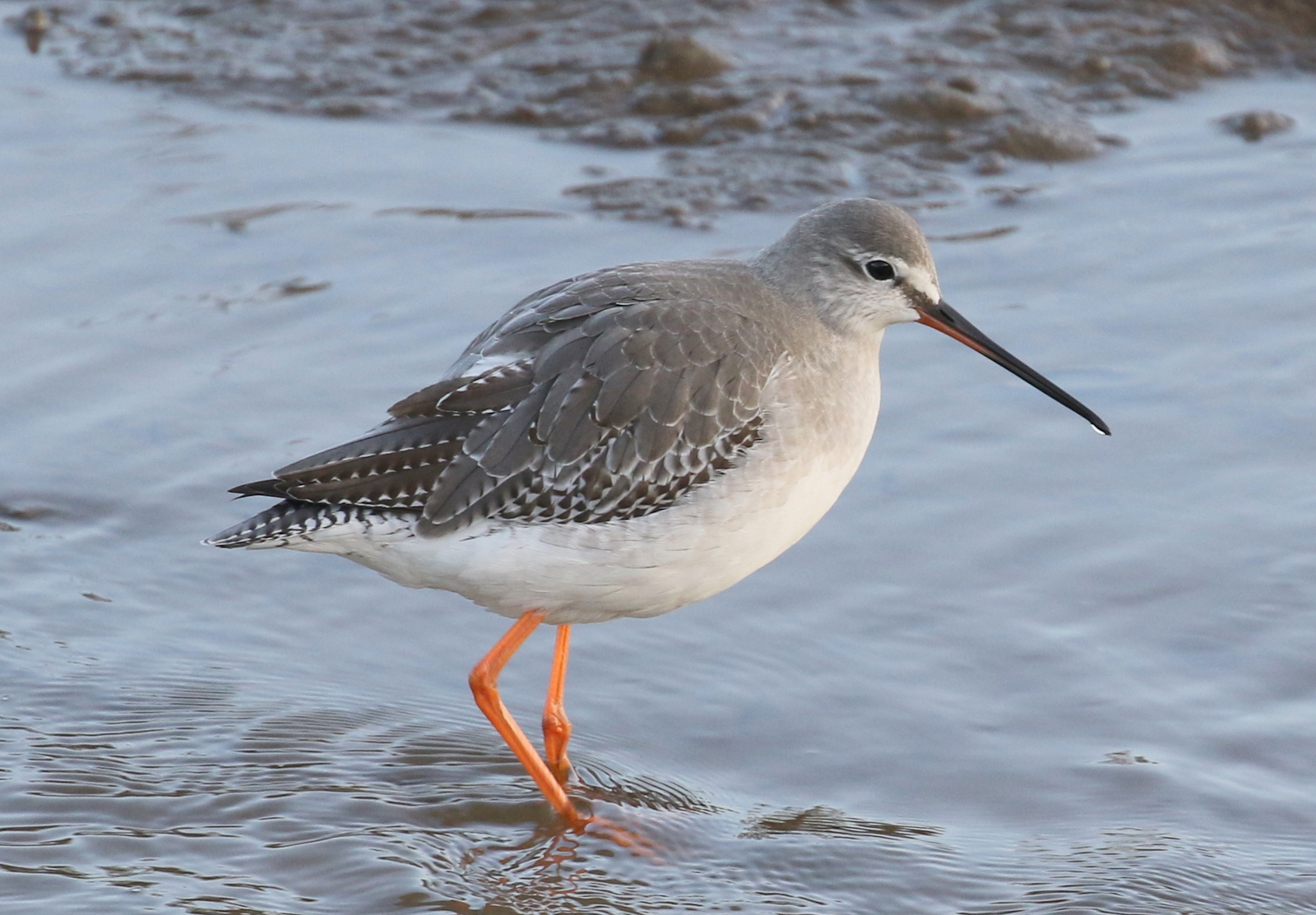
A Little Egret was fishing here too. As the tide was going out, small fish and invertebrates were trapped in the pools or trying to escape over the small weirs created by the mud, providing easy prey for the birds. We watched the Spotted Redshank catch a large shrimp. It seemed to play with it for several minutes, dropping it back in the water, picking it up and turning it in its bill, then dropping it again. We thought it might lose it at one point but eventually it seemed to have enough and with a bit of effort, managed to swallow it.
Lots of other waders had gathered in the wider channel which runs back away from the path too. We stopped to admire a Bar-tailed Godwit on the mud, and a couple of Black-tailed Godwits feeding in the deeper channel nearby. A Grey Plover was positively glowing in the last of the afternoon’s light, and there were plenty of Redshank and a few Curlew here now too. A couple of smart drake Teal swam past.
Suddenly a large dark shape came hurtling towards us low over the Volunteer Marsh. It turned at the last minute and crash-landed on the path beside us, just a couple of metres away. It was a Woodcock, presumably a fresh arrival in off the sea from the continent. It took a couple of seconds to get its bearings, saw us, and then flew off quickly over the bank.
Back at the Freshmarsh, the gulls were starting to gather to roost. We stopped to look through them. They were mainly Black-headed Gulls, with an increasing number of larger ones, mainly Herring Gulls and Lesser Black-backed Gulls. One caught our eye – slightly darker than the Herring Gulls but not as dark as a Lesser Black-backed Gull. It was chunky too, with a heavy bill, and a rather white head with limited and fine dark streaking around the eye. It was an adult Yellow-legged Gull, but unfortunately it waded into the deeper water and hid its yellow legs from view.
The Marsh Harriers were gathering to roost too now. We could see three or four over the back of the reedbed or over the trees beyond. The light was starting to go, so we made our way back to the car. As we got back to the car park a flock of Long-tailed Tits was feeding in the trees and we managed to pick out a Blackcap feeding in the sycamore with them just as we packed up to go.
















